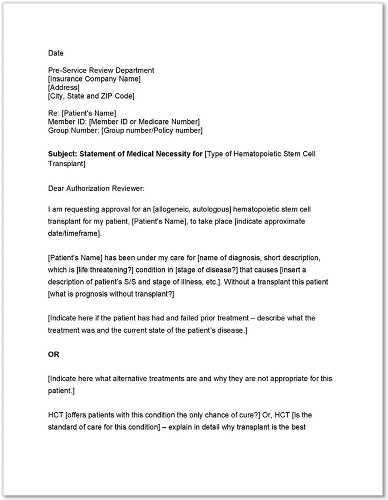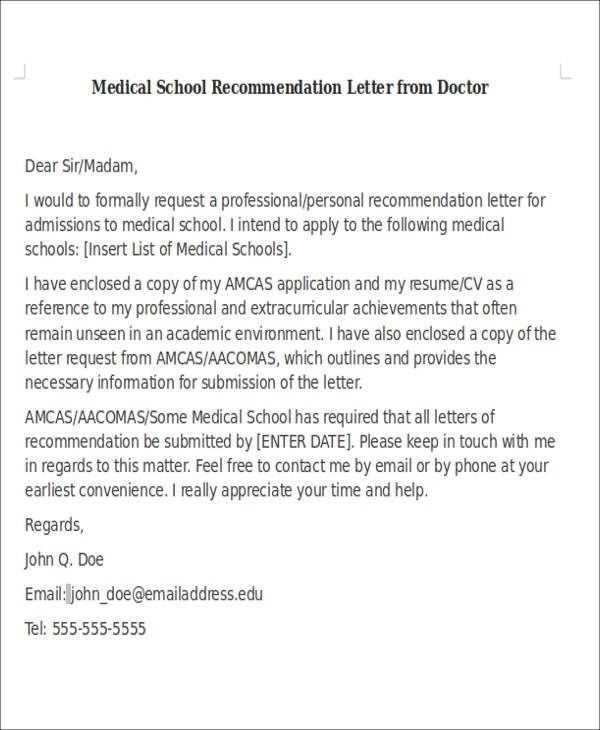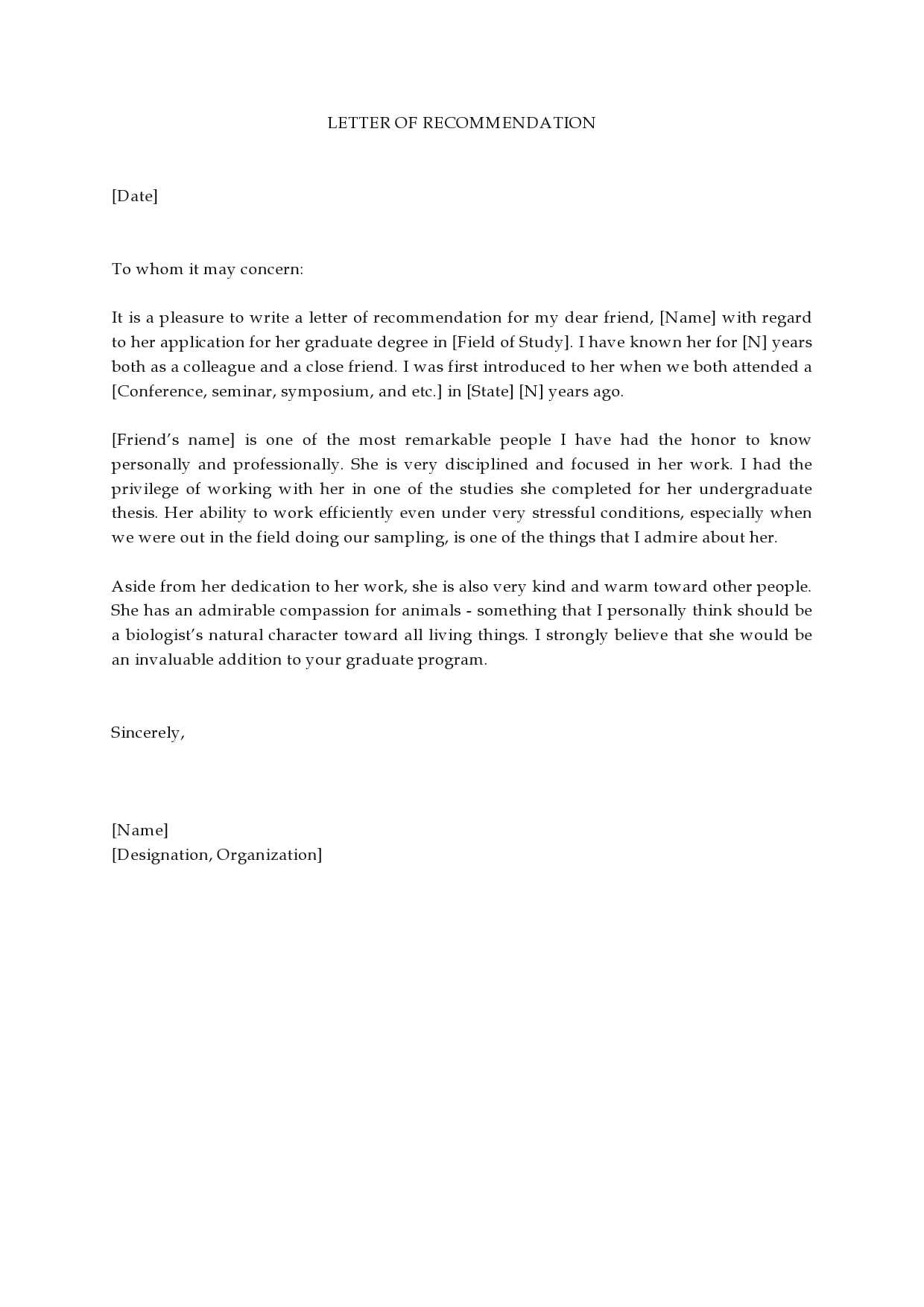Doctor Letter of Medical Necessity Template for Healthcare Providers

In many healthcare situations, clear and precise written communication is essential to ensure that necessary services and treatments are approved. This type of documentation often plays a key role in securing coverage from insurance providers or obtaining authorization for specific care. Properly structured statements can significantly impact the success of these processes.
Accurate documentation should include the necessary details to explain the reasons for a specific intervention or therapy. It’s important to follow a clear format that emphasizes the patient’s condition and the required support. Well-crafted communications ensure both clarity and credibility in the eyes of insurance reviewers and healthcare administrators.
By understanding the critical elements of such documents, professionals can increase the likelihood of swift approvals and prevent unnecessary delays. The goal is to create a compelling and coherent request that aligns with both patient needs and regulatory standards.
Understanding the Purpose of Healthcare Documents

In healthcare, written documents serve as formal communication tools that explain the need for specific treatments or services. They provide a detailed rationale for why a certain procedure, device, or care plan is essential for a patient’s well-being. These written requests are critical for obtaining approvals from insurance providers or healthcare organizations.
The primary goal of these documents is to clearly present the medical reasoning behind the requested intervention, ensuring that it is understood and accepted by all relevant parties. They highlight essential information such as:
- Patient’s diagnosis and condition
- The necessity for the proposed intervention or treatment
- Supporting evidence from clinical studies or guidelines
- Expected outcomes and benefits for the patient
These documents are typically evaluated by insurance companies or other entities responsible for approving treatments. A well-written submission can significantly enhance the chances of gaining approval, while poorly structured or unclear information can lead to delays or rejections.
By clearly outlining the patient’s needs and the justification for the request, these documents help ensure that necessary care is provided without unnecessary obstacles. Understanding the purpose of such communications is crucial for healthcare providers aiming to support their patients efficiently.
Essential Components of a Healthcare Document
When crafting a formal communication to request a specific intervention or treatment, it’s important to include certain critical elements. These components help ensure that the document is clear, professional, and persuasive. Each section of the document plays a vital role in supporting the request and providing all necessary information to facilitate approval.
Key Information to Include
To ensure completeness, the following points should be covered in the document:
| Section | Description |
|---|---|
| Patient Details | Include the patient’s full name, date of birth, and any relevant identification numbers to clearly identify the individual. |
| Diagnosis | Provide a detailed explanation of the patient’s condition, including diagnosis codes, clinical findings, and any relevant tests or assessments. |
| Requested Intervention | Describe the specific treatment, service, or equipment being requested, explaining why it is necessary based on the patient’s condition. |
| Justification | Explain the clinical rationale for the intervention, including how it will improve the patient’s health and quality of life. |
| Supporting Evidence | Reference relevant medical studies, guidelines, or expert opinions that reinforce the need for the requested service or procedure. |
Format and Tone
In addition to the content, the format and tone of the communication are important. The document should be professional, concise, and free of jargon. It must clearly convey the message without ambiguity, ensuring that all stakeholders can quickly understand the reasoning behind the request. This careful attention to detail helps increase the likelihood of timely approval and effective communication.
How to Write a Clear Healthcare Request
Writing a request for a specific treatment or service requires precision and clarity. The aim is to ensure that all necessary information is conveyed effectively so that the recipient can understand the purpose of the request and make an informed decision. A well-written request increases the chances of approval and minimizes confusion during the review process.
Start by clearly outlining the purpose of the request. Focus on the patient’s condition and the specific intervention being requested. Make sure the language is straightforward, avoiding unnecessary medical jargon that could confuse the reader.
Ensure that all relevant details are included. Describe the diagnosis, why the proposed service is necessary, and how it will benefit the patient. Including supporting evidence, such as clinical guidelines or research, can further strengthen the request.
Finally, keep the tone professional and respectful. The request should be concise, without over-explaining, while still providing all required information. A clear and well-structured submission is essential for effective communication and approval.
Common Mistakes to Avoid in Documentation

When preparing formal requests for specific treatments or services, it’s easy to make small errors that can lead to confusion or delays. Avoiding common mistakes is crucial to ensure that the communication is clear, complete, and likely to be approved without unnecessary back-and-forth. Below are several key pitfalls to watch out for:
1. Lack of Specificity
Being vague or general in the description of the patient’s condition or the requested intervention can lead to misunderstandings. Always provide detailed information and clarify why the requested service is necessary. Clear explanations help decision-makers better understand the situation.
2. Missing Supporting Evidence
Failing to include relevant research, clinical guidelines, or expert recommendations can weaken the request. These materials are essential to demonstrate that the requested service is aligned with current medical standards and is appropriate for the patient’s needs.
3. Unclear Format
A disorganized document can make it harder for the reader to follow the logic of the request. Ensure that the information is presented in a logical, easy-to-read format, with sections that clearly address each important point without redundancy.
4. Overloading with Jargon
Using complex medical terminology may confuse those who are not familiar with the specific terms. Although certain medical language is necessary, be sure to balance it with simple and clear explanations for readability and understanding.
5. Failing to Proofread
Typos, grammatical errors, or unclear language can diminish the professionalism of the request. Proofread carefully to ensure that the document is polished and error-free before submission.
By avoiding these common mistakes, healthcare providers can ensure that their requests are taken seriously and processed efficiently, improving the chances of getting timely approvals.
Improving Approval Chances with Proper Format

Ensuring the correct structure and presentation of a request can significantly increase the likelihood of it being approved. A well-organized and properly formatted document not only helps convey your message clearly but also demonstrates professionalism and attention to detail. When requesting a specific treatment or service, a structured approach helps the reader quickly understand the key points and rationale behind the request.
Key Formatting Guidelines
To improve approval chances, focus on the following key aspects of formatting:
- Clear Headings: Use headings and subheadings to break the document into easily digestible sections. This ensures that each part of the request is highlighted and can be reviewed individually.
- Logical Flow: Present the information in a logical order. Start with patient details, followed by the diagnosis, treatment request, and supporting evidence. This allows the reader to follow the progression of the request without confusion.
- Conciseness: Be brief but thorough. Avoid long paragraphs that can overwhelm the reader. Instead, use bullet points or numbered lists to highlight key information.
Why Structure Matters
The format of the document not only improves clarity but also signals to the reader that the request is well-considered and easy to assess. A clear and professional layout increases the chances of the document being reviewed promptly and favorably, as it makes the approval process more efficient for all parties involved.